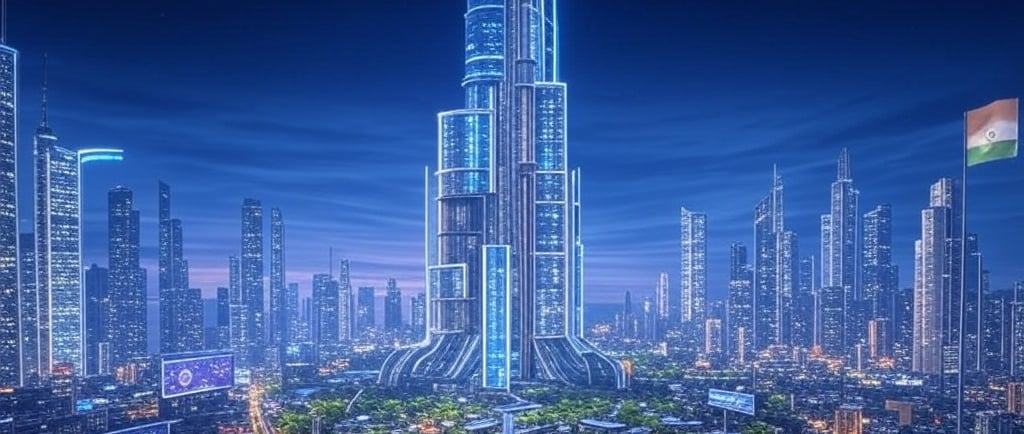Three Most Probable Futures for Humanity in the Next 100 Years
Most likely scenarios without the doom and gloom
AI
3/15/20253 min read


It’s March 14, 2025, and humanity’s next century hinges on manufactured fusion energy—a breakthrough poised to eliminate scarcity and redefine power. With compact reactors delivering limitless, clean energy, the nations best equipped to innovate and capitalize will lead by 2125. The United States, with its 40-year technological head start in fields like semiconductors and aerospace, stands out as a frontrunner. Here are three plausible futures shaped by fusion, each with a dominant country and government type, reflecting who can turn this revolution into global dominance.
Future 1: The Fusion Technocratic Ascendancy
In this scenario, fusion energy ushers in a technological golden age by the 2050s, creating a "fusion technocratic ascendancy." Fusion powers cities and industries, while artificial intelligence (AI) and brain-computer interfaces amplify human ingenuity. Automation displaces labor, and fusion-driven ships colonize Mars. Prosperity surges, but it’s the nations with unmatched innovation that steer the course.
Dominant Country: United States
The U.S. leverages its technological supremacy to dominate. Its lead in semiconductors, software, and aerospace—decades ahead of rivals—translates into mastery of fusion tech by 2070. Companies in Silicon Valley and beyond scale fusion reactors, integrating them with AI to outpace global competitors. The U.S. exports this power, securing economic and space leadership.
Government Type: Centralized Techno-Democracy
The U.S. evolves into a centralized techno-democracy. Fusion energy consolidates federal influence, managed by a tech-savvy government using AI to optimize policy. Citizens vote, but a meritocratic elite—drawn from America’s innovation hubs—guides the system. This blends democratic ideals with efficiency, influencing allies like the UK and Japan.
Key Driver: The U.S.’s fusion breakthrough in the 2030s, built on its tech legacy, fuels exponential growth. Nations like China, still catching up in high-tech manufacturing, lag behind America’s head start.
Future 2: The Fusion Decentralized Frontier
Here, fusion energy fragments society by 2100, forming a "fusion decentralized frontier." Miniaturized reactors power cities, ships, and homes, breaking centralized grids. Innovation thrives, but disparities widen—regions with cutting-edge capacity flourish, while others falter. Space turns into a frontier, with fusion-powered pioneers mining asteroids and settling moons, leaving Earth a mosaic of advanced hubs and lagging zones.
Dominant Country: United States
The U.S. excels in this chaotic landscape. Its entrepreneurial ecosystem—rooted in a 40-year tech lead—drives fusion innovation. By 2070, it dominates North America and space, with its military securing lunar resources and tech enclaves like Seattle and Austin leading the charge. America’s risk-taking culture keeps it ahead.
Government Type: Decentralized Techno-Capitalism
The U.S. splinters into a decentralized techno-capitalist system. Fusion-rich hubs govern themselves with AI and digital voting, preserving democracy among innovators. Less advanced areas fall under corporate or populist rule, reflecting uneven adaptation. Freedom reigns, but it favors the capable.
Key Driver: Fusion miniaturization in the 2040s, spearheaded by U.S. startups, disrupts centralized models. Countries like China, reliant on state control, struggle to match America’s agile innovation.
Future 3: The Fusion Global Harmony
In this hopeful vision, fusion energy unites humanity by 2125, forging a "fusion global harmony." A cooperative effort in the 2030s scales fusion worldwide, powering education, healthcare, and infrastructure for all. AI optimizes resources, and space exploration—Mars colonies, orbital habitats—becomes a collective triumph. Leadership falls to the nation blending innovation with global outreach.
Dominant Country: India
India rises as a fusion superpower, though the U.S. remains a close contender. India’s youthful population and growing tech sector scale fusion by 2060, exporting it to the Global South. While the U.S. leads in raw innovation, India’s ability to adapt and collaborate—building on American tech—makes it a diplomatic and economic hub.
Government Type: Democratic Technocracy
India crafts a democratic technocracy. Fusion decentralizes energy, but AI—guided by elected leaders—ensures broad benefits. Citizens vote on goals, while local councils tailor solutions, balancing progress with diversity. The U.S. adopts a similar model, but India’s global influence shines brighter.
Key Driver: India’s fusion surge in the 2040s, leveraging U.S.-developed tech, sparks a cooperative renaissance. America’s lead persists, but India’s outreach wins the world.
Which Future Awaits Us?
Fusion energy crowns the innovative. The Fusion Technocratic Ascendancy and Decentralized Frontier both see the U.S.’s 40-year tech edge—evident in ICs and beyond—securing dominance through centralized or scattered brilliance. The Fusion Global Harmony lifts India, using U.S. innovation as a springboard for global unity.
Geopolitical Wildcards: China could surprise if it closes the tech gap. The EU might unify into a fusion contender. Africa, with fusion and youth, could rise fast.
Technological X-Factors: Fusion-AI synergy could amplify U.S. dominance or democratize power (India). Genetic engineering might boost innovation further. A fusion glitch could upend any leader.
Human Nature: Will fusion’s gains stay with pioneers or spread? History suggests both—America invented the internet, but it went global.
By 2125, we might live under a U.S. techno-democracy, thrive in an American frontier hub, or build a fusion-powered Mars with India’s help. I’d bet on the Decentralized Frontier—the U.S.’s tech lead and chaotic genius suit fusion’s potential. But Global Harmony tempts if collaboration prevails. What’s your pick—U.S.-led order, scattered innovation, or shared prosperity?

Your Opinion? Let us know!
We’re here to help you enhance your life with AI.
